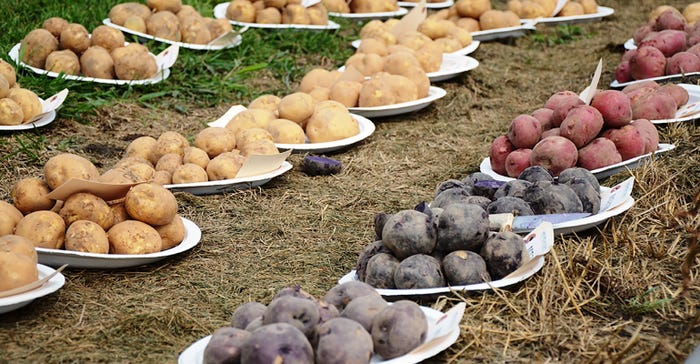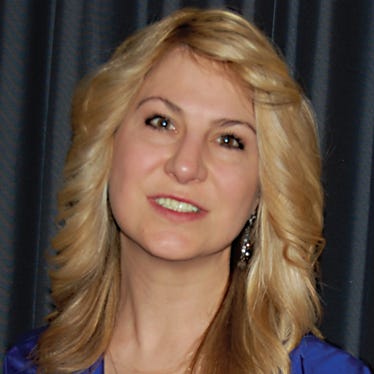
People like to snack. That’s good news for the potato chip industry. How they snack and how they buy their snacks is trickling down to the producer level.
“Consumer trends are changing, and people are shifting away from family-sized bags and moving toward smaller-size packages,” says Phil Gusmano, vice president of Better Made Snack Foods and chairman of the Michigan Potato Industry Commission. “Consumers like the volume of 1-ounce and 2-ounce bags. And if you look at those bags, we are growing potatoes too large to fit. Smaller bags mean we need smaller potatoes.”
Paying attention to the chip industry is important to Michigan growers: 70% of the state’s crop is used to make chips.
Right now, the upper end of the Class 1 chip potato is 3 3/4 inches, while the minimum is 17/8 inches, according to Mike Wenkel, MPIC executive director. “We need to go from a softball to a baseball size,” he says.
The optimal size is just one area where consumer trends are making an impact. Fewer people are cooking from home and not from scratch, Gusmano says. “They want ready-to-go from the store,” he adds. “If they want mashed potatoes, Bob Evans has a tub of potatoes that you can pick up at Kroger and pop in the microwave. The consumer shift toward prepackaged food is affecting the fresh market across the country and in Michigan. People don’t want to wash, peel, boil and mash anymore.”
Only about 20% of Michigan’s potato crop is for the fresh market. The remaining 10% is split between seed potatoes and fresh processed, frozen and canned.
From a breeding perspective, Michigan State University, state growers and processors are all working together with a strong focus on chip processing, according to Dave Douches, MSU potato breeder and a professor in plant soil and microbial sciences. “It’s a very forward-directed effort to getting new varieties to the industry,” he says.
Bringing to market a superior chip potato means hitting the target size, but it also puts a dominant focus on storage. “Storing potatoes longer into the season gives Michigan an edge,” Douches says. “We are positioning Michigan as a go-to for chip potatoes out of storage.”
Michigan is currently able to deliver potatoes out of storage from October to June. Variety development may allow that to expand into July or even early August.
Disease prevention
Douches’ work is also centered on three main yield-robbing diseases: common scab, potato virus Y (PVY) and late blight. He’s working to upgrade and replace 20- to 30-year-old varieties with ones that offer resistance.
He’s not alone. In the last couple of years, variety research and development has been moving from individual states to more of a nationally driven process, says Chris Long, MSU potato specialist, who also coordinates research on the national Potatoes USA Chip Committee.
Potatoes USA, a grower-funded, USDA-governed checkoff program, is a rebranding of the U.S. Potato Board. Long, along with Ryan Krabill, director of research, and Charlie Higgins, a private contractor, manages the variety development committee.
MSU has a contract with Potatoes USA for 20% of Long’s time. “In the last year and a half to two years, the chip committee is being very intentional to engage breeders on a national level, all the way from trials and variety development to commercialization,” Long says. “We’re also partnering with growers and processors on the national level, and it’s all positive. Success is really based on the engagement of diverse people, different environments and teamwork. That effort is much bigger than it was 10 or 15 years ago.”
Gusmano says that vertical cooperation includes Potatoes USA, universities, seed growers, potato growers and processors. “It’s vertical communication that I’ve never seen in any other industry.”
Long adds that Douches continues to develop varieties that have great relevancy at the national level.
In the last two years, new biotechnologies are also contributing to the process of creating a better spud. Idaho-based J.R. Simplot Co., with its second generation of genetically engineered potatoes, says its new varieties will reduce late blight, enhance storage capacity and lower the amount of a chemical that’s a potential carcinogen when cooked at high temperatures.
Late blight was the culprit that rotted entire crops in the 1840s and led to the Irish potato famine and the deaths of about a million people from starvation.
Work also continues on diploid breeding, which Douches says has great potential for better potato breeding for the future. Diploid breeding cuts the normal four chromosome sets to just two, which when bred, makes the potato into more of a hybrid — much like the corn hybrid breeding system. Traditional breeding makes stacking traits very difficult, Douches says. The inbreds allow for an easier way to breed in desirable traits.
“We have nothing to show to commercial farmers yet, but we are working to develop a system to make potato breeding more responsive to industry needs,” Douches says. “Companies in Europe are making great progress. We may see some things in five years out of Europe.”
The University of Wisconsin and MSU, he adds, are pushing hard on the diploid breeding effort.
More to work on
Controlling old diseases is not enough. Stephanie Kipp, chairwoman of the MPIC Research Committee, says disease prevention is a top priority. A new disease, Dickeya, which is found in Europe and parts of the Northeast, is a bacterium that has the potential to wipe out a crop.
“It comes in seed, and we haven’t been able to find it until growers find it out in the field,” says Kipp, who is also a certified crop adviser and the agronomist on her family’s farm in the Montcalm County town of Blanchard.
“Our only defense is really watching where seed comes from and not buying from known places that have it,” she says.
Potatoes are the main crop on the multigenerational family farm, which is run by Kipp’s father, Mark Andersen, and her uncle, Duane Andersen. Farming about 7,000 acres, they grow wheat, peas and green beans for Gerber, and field and seed corn.
The crop diversity helps address soil health, another key issue for potato growers. “We have a three-year potato rotation, so that we’re not keeping potatoes on the ground too much,” Kipp says. “We have sandy soils, so we cover-crop everything to help contain erosion.”
In the next one to two decades, Long suspects there will be major advancements in soil health and an understanding of why certain things negatively impact soil. “Soil is like flying to the moon in the sense of discovery,” he says.
About the Author(s)
You May Also Like






